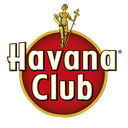Executive Secretary

IX International Symposium on Chemistry and Pharmaceutical Sciences
SIQF 2025
9th Symposium “Design, production and development of drugs” and 4th International Symposium “Chemistry of natural products”
Problem: Amazonian plants such as Pourouma cecropiifolia, Eryngium foetidum, Salacca zalacca, Mansoa alliacea, Eucharis moorei, and Siparuna pauciflora are used in traditional medicine by Kichwa communities for the treatment of various conditions. Therefore, the combination of ancestral and scientific knowledge may be a viable option for the control of type II diabetes, the leading cause of death worldwide. Objective: To evaluate the bioactive compounds, enzymatic modulation, and hemolytic activity of hydroalcoholic extracts.
Methodology: Evaluation by UV-vis spectrophotometry, based on in vitro assays (ABTS, DPPH), inhibition against the enzyme α-amylase, and erythrocyte hemolysis.
Results and discussion: Two of six plant species showed high antioxidant capacity with IC50 values of 2.63 ± 0.25; 14.28 ± 0.84 µg/mL (ABTS; DPPH) P. cecropiifolia and IC50 = 8.46 ± 0.20; 35.24 ± 0.98 µg/mL (ABTS; DPPH) in S. zalacca. In inhibiting the α-amylase enzyme, P. cecropiifolia exhibited excellent inhibitory capacity with an IC50 = 21.77 ± 0.75 µg/mL, standing out among other plant species. Furthermore, a cytotoxic analysis showed less than 2% hemolytic activity in the extracts.
Conclusion: P. cecropiifolia stood out for its greater biological potential due to its high concentration of bioactive compounds, making it a promising candidate for the treatment of hyperglycemia.
Problemática: Las plantas amazónicas como Pourouma cecropiifolia, Eryngium foetidum, Salacca zalacca, Mansoa alliacea, Eucharis moorei, Siparuna pauciflora son empleadas en la medicina tradicional por comunidades kichwas, para el tratamiento de diferentes afecciones por lo que la combinación del conocimiento ancestral y científica pueden ser una opción viable para el control de la diabetes tipo II, causante principal de muertes en todo el mundo. Objetivo: evaluar los compuestos bioactivos, modulación enzimática y actividad hemolítica de extractos hidroalcohólicos.
Metodología: evaluación mediante espectrofotometría uv-vis, a partir de ensayos in vitro (ABTS, DPPH), inhibición frente a la enzima α-amilasa y hemólisis de eritrocitos.
Resultados y discusión: Dos de seis especies vegetales mostraron una alta capacidad antioxidante con valores de IC50= 2,63±0,25; 14,28±0,84 µg/mL (ABTS; DPPH) P. cecropiifolia e IC50= 8,46±0,20; 35,24±0,98 µg/mL (ABTS; DPPH) en S. zalacca. En la inhibición de la enzima α-amilasa, P. cecropiifolia exhibió una excelente capacidad inhibitoria con una IC50= 21,77± 0,75 µg/mL, destacando entre las demás especies vegetales. Además, un análisis citotóxico donde los extractos presentaron una actividad hemolítica menor al 2%.
Conclusión: P. cecropiifolia destacó al obtener mayor potencial biológico por su alta concentración de compuestos bioactivos siendo candidata prometedora para el tratamiento de la hiperglicemia.
About The Speaker

Jennifer Rodríguez

Discussion


 Gold
Gold
 Gold
Gold
 Silver
Silver
 Silver
Silver